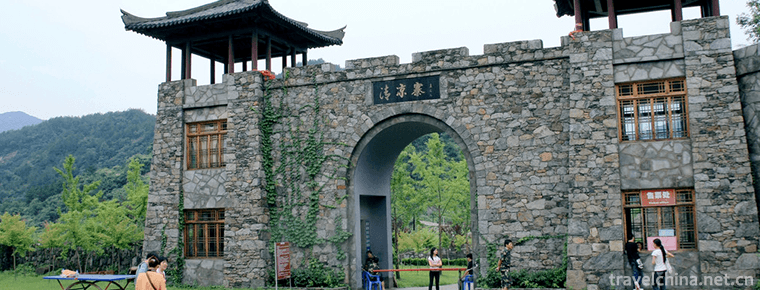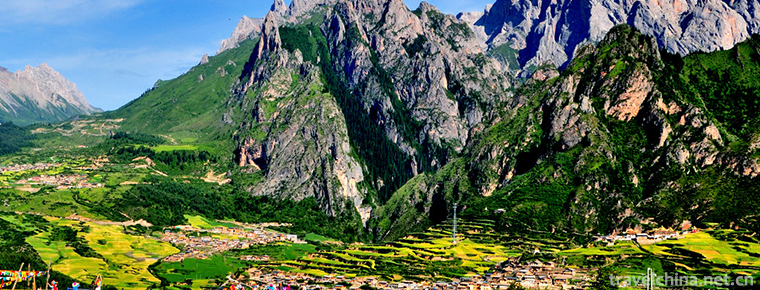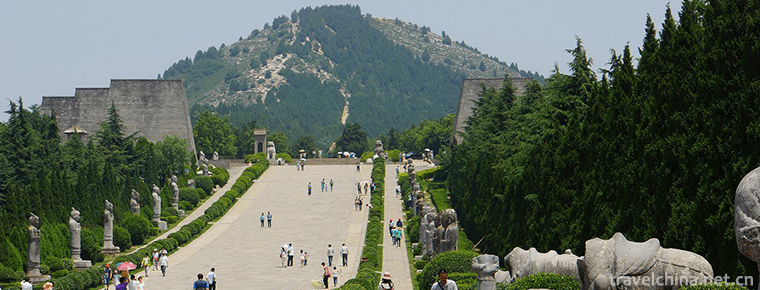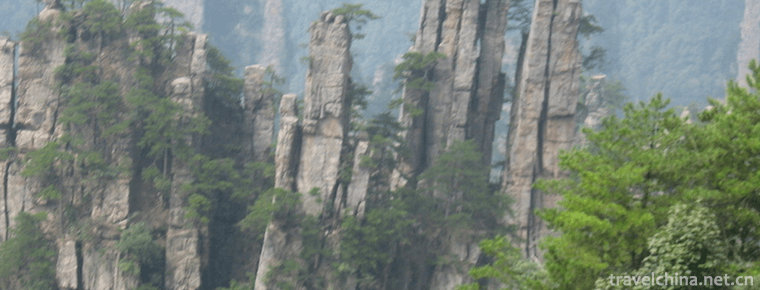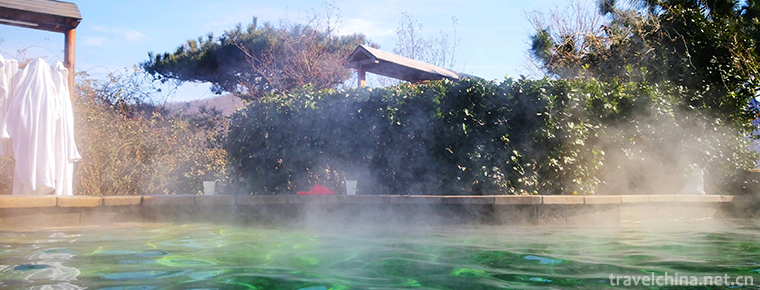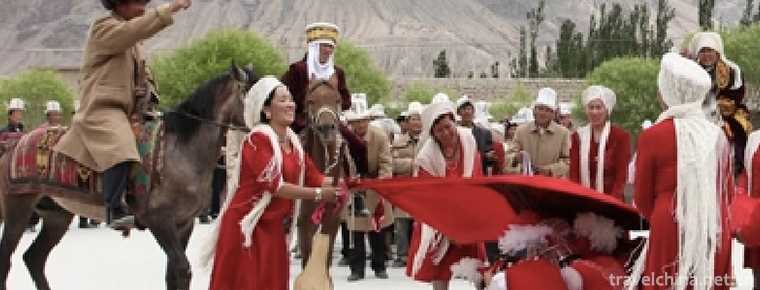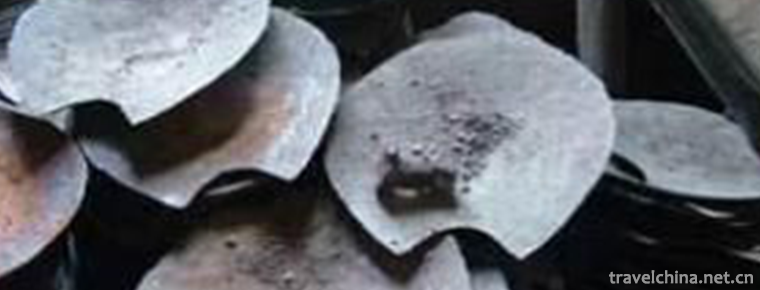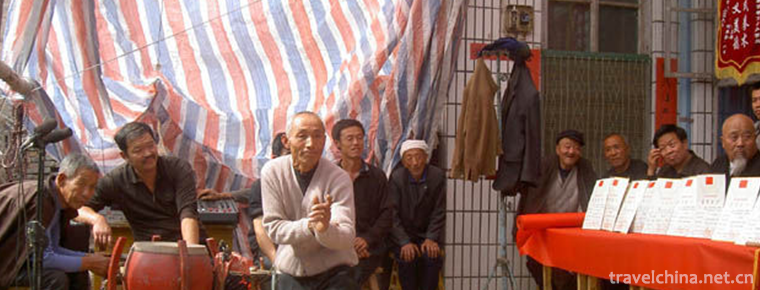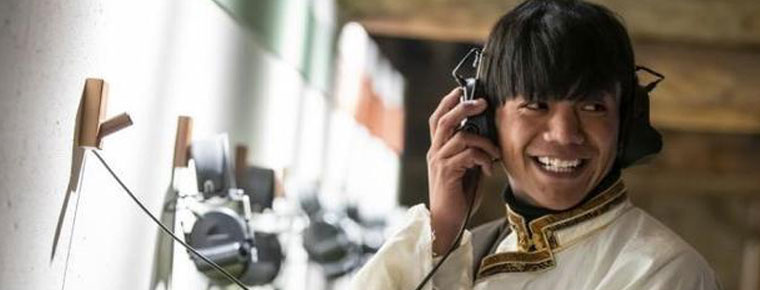Qufuming Old Town
Qufuming Old Town
Qufuming Old Town: World Cultural Heritage, one of the three holy cities in the world, national AAAAA tourist attractions, National Scenic spots, national key cultural relics protection units, one of the three ancient buildings in China.
Qufuming Old Town is located in Jingxuan West Road, Qufu City, Jining City, Shandong Province. It is based on the tourism of Confucian Temple, Confucian Mansion and Confucian Forest in Qufu City.
Confucius Temple, built in 478 B.C., has been expanding since then. It covers 327 hectares of ancient buildings. It is one of the three largest ancient buildings in China. It occupies an important position in the world architectural history and is known as the second stele forest in China.
The Confucian government, also known as the "Yansheng Gongfu", was built in the Song Dynasty. It is the residence of Confucius'descendants. It is adjacent to the Confucius Temple in the West and covers an area of about 16 hectares. After the rebuilding of Jiajing in Ming Dynasty, it became the noble residence next only to the Palace Museum in Beijing, known as "the first in the world".
Confucius Lin, also known as "the most sacred forest", is the graveyard of Confucius and his descendants, with more than 100,000 graves, covering more than 3,000 mu. It is the largest, longest lasting and most complete clan tombs and artificial gardens in China. It is an ancient man-made gardens and also a natural botanical garden.
"Confucius Temple, Confucius Mansion and Confucius Lin" are not only symbols and symbols of ancient China's worship of Confucianism, but also important objects for the study of Chinese history, culture and art.
geographical position
Its geographical location is in the old Confucius Hill, now Qufu City, Shandong Province, Nishan Town.
Main attractions
Confucius Mansion
Confucius Mansion, originally named Yanshenggong Mansion, is located on the east side of Confucius Temple in Qufu City. It is the residence of Confucius Di's descendants. Yanshenggong was the title conferred by Song Renzong on Confucius 46 generations from the Northern Song Dynasty to the second year (1055 A.D.). This title was successively inherited by the descendants of Confucius for 32 generations, lasting 880 years.
Yan Shenggong was a great noble with privileges in Chinese feudal society. He was equivalent to eight-grade officials in Song Dynasty and promoted to three-grade officials in Yuan Dynasty. He was a grade official in early Ming Dynasty, and then "the head of a class of civil officials". In Qing Dynasty, he was also allowed to ride horses in the Forbidden City and walk on the Royal road.
Kongfu covers an area of 240 mu, with 463 halls, halls, buildings and houses. Nine into the courtyard, three routes layout: east road is East school, built consistent hall, Muen hall, Confucius temple and workshop; West Road is West school, there are red calyx Xuan, Zhongshu hall, Anhuai hall and flower hall; the main part of Confucius hall is in the middle road, in front of the official, there are three halls and six halls, behind the house, there are front room, front and back hall, auxiliary building, back six halls, and finally the garden.
Confucian Temple
Confucius Temple is a temple for the worship of Confucius, a thinker, statesman and educator in the Spring and Autumn Period, which is located in the central part of Qufu City. It is a group of ancient buildings with Oriental architectural features, huge scale and magnificent momentum.
Confucius Temple began in the second year after Confucius'death (478 BC). The disciples erected their former residence hall as a temple and worshipped it when they were old. At that time, there were only three Temple houses, which contained the clothes, crowns, pianos, cars and books used by Confucius in his lifetime. Thereafter, dynasties continued to expand. In the first year of Yongxing in the Eastern Han Dynasty (153 A.D.), Emperor Huan ordered Confucian temples to be built and appointed Confucius Ho as the guardian of the temples. In the early two years of Wei and Huang Dynasty (221 A.D.), Emperor Cao Pi ordered the old temple to be built in Lujun, but the scale of the temple was not very large at that time. In the late Western Jin Dynasty, the temple was desolate. In the first year of Xinghe in the Eastern Wei Dynasty (539 A.D.), the temple was renovated and "the sacred appearance of sculpture, with ten sons standing beside it", which was the beginning of the statue of the temple. In the early Tang Dynasty, besides the construction of "one Confucius Temple for each of the Zhou Gong and one Confucius Temple" in Guozijian, the highest University in the capital, the emperor ordered that "Confucius Temple be established in both prefectures and counties". The temples were built five times in the Tang Dynasty and seven times in the Northern Song Dynasty. The biggest one was in the second year of Emperor Zhenzong of Song Dynasty (1018 AD), "enlarging the old system... expanding 316 halls and corridors". It was repaired four times in the Jin Dynasty, six times in the Yuan Dynasty and 21 times in the Ming Dynasty. The biggest one was in the twelfth year of Emperor Xiaozong Hong of the Ming Dynasty (1499 A.D.), when the Confucian Temple was struck by lightning and more than 120 main buildings such as Dacheng Hall were "reduced to ashes". Emperor Zhu Youdian hastily ordered the restoration, which lasted five years and consumed 152,000 yuan of silver. By the Qing Dynasty, Confucius Temple had been built 14 times.
The biggest one was Yongzheng 2 years (1724 A.D.). At that time, Confucian temple was destroyed by Emperor Xuzhen of Leihuo Shizong. In addition to personally offering sacrifices to Confucius, he also "issued money to ministers and other supervisors to supervise the repair of the temple. The scale of the temple system, even sacrificial utensils and objects, all made the drawings show and were instructed by their relatives". In order to speed up the progress of the project, 12 prefectures, prefectures and counties were mobilized to supervise and repair the project, which lasted for six years. Historically, Confucian temples have been repaired 15 times, 31 times, hundreds times, and finally formed such a grand scale. Today's Confucian temples were completed in the Ming and Qing dynasties. The building imitates the Imperial Palace system. It is divided into nine courtyards, running through a north-south axis, and arranged symmetrically from left to right. The whole complex consists of five halls, one pavilion, one altar, two Lu halls, two halls and 17 monuments and pavilions, totaling 466, which were built in the Jin, Yuan, Ming, Qing and Republic periods respectively. Confucius Temple covers an area of about 200 mu, more than one kilometer in length from north to south. It is surrounded by high walls, with portals and turrets. Huangwa Hongyuan, carved beams and painted pillars, stone tablets such as forest, ancient trees towering. Lumeng Zheng of Song Dynasty wrote in praise: "The clouds are dazzling, the eaves are flanking, the doors are opening, the layers are gloomy and their special rise." This huge building complex with Oriental architectural characteristics, with its vast area, magnificent spirit, long history and integrity, has been called "the only isolated case" in the history of World Architecture by ancient architects. It embodies the sweat and blood of thousands of laborers in past dynasties and is the crystallization of the wisdom of the working people of our country.
Kong Lin
Confucius Linben, known as the Holy Forest, is the graveyard of Confucius and his family. After Confucius died, his disciples buried him on the North Sishui of Lucheng. At that time, he was still "grave but not grave" (without uplift of high earth). In the Qin and Han Dynasties, although the tombs were built high, there were only a small number of cemeteries and several forest keepers. Later, with the increasing status of Confucius, the scale of Confucius became larger and larger. In the three years of Yongshou (157 A.D.), Emperor Huan of the Eastern Han Dynasty built a tomb of Confucius by Lu Xiang and Han Xun. In front of the tomb, he built a God gate, and in the southeast, he also built a house for staying and staying. Several families in the elementary school of Wu were used to clean the tomb of Confucius. At that time, Confucius Forest "had no more than one hecta Only 600 trees were planted in Gaoqi in the Northern and Southern Dynasties.
During the reign of Xuanhe in the Song Dynasty, stone-making instruments were built in front of Confucius'tombs. In the two years from Yuan Wenzong to Shun Shun (1331 AD), Kong Sikai majored in building forest walls and forest gates. In the ten years of Hongwu in Ming Dynasty (1684 AD), Konglin was expanded to 3000 mu. In the eighth year of Yongzheng (1730 A.D.), Kong Lin was overhauled, and various gates were repaired with money and money of 25300, and special officers were assigned to guard them. According to statistics, since the Han Dynasty, the Confucian forests have been renovated 13 times, planted 5 times and expanded 3 times. The wall around Konglin is 7.25 kilometers long, 3 meters high and 5 meters thick. The total area of the wall is 2 square kilometers. As a clan cemetery, the porous forest is larger than Qufu City. It has been buried for more than 2000 years without interruption. Here we can study the burial of the Spring and Autumn Period and the tombs of the Qin and Han Dynasties, as well as the development of politics, economy and culture and the evolution of funeral customs in the past dynasties. In 1961, the State Council promulgated it as the first batch of national key cultural relics protection units.
"Tombs are thousands of years old, forests are deep and cold in May." There are more than 100,000 trees in the Confucian forest. Legend has it that after Confucius'death, "disciples each planted with quadrangular and exotic trees, so there are many different trees. The Lu people have been unable to name them from generation to generation." Today, some trees in the Confucian forest can not be named by people. Among them, cypress, birch, oak, elm, locust, regular script, plain, maple, poplar, willow, sandalwood, privet, five flavors, cherry blossoms and other big trees, with intertwined roots and luxuriant branches; wild chrysanthemum, Pinellia ternata, bupleurum, Prince ginseng, Ganoderma lucidum and hundreds of other plants also compete for glory in accordance with the times. Kong Lin is a natural botanical garden. There is no way to see the broken stele in the deep tree. In the Confucian forest covered by ten thousand trees, stone tablets are like forests and stone rituals are in groups. In addition to a number of famous Han steles which have been moved into the Confucian temple, there are still tombstones written by famous calligraphers such as Li Dongyang, Yan Song, Weng Fanggang, He Shaoji and Kang Youwei in the forest. Therefore, Confucius Lin is also called a veritable stele forest.
Tourist guide
Ticket Price
The price of Confucius is 60 yuan, the price of Confucius Temple is 90 yuan, the price of Confucius Lin is 40 yuan, and the pass of Sankong is 150 yuan.
Ticket-free admission for persons with disabilities above the second class; half-price concessions for persons with disabilities above the third class; half-price concessions for persons with disabilities between 1.1 m and 1.4 m in height; no ticket-free admission for persons below 1.1 m in height; no ticket-free admission for persons over 70 years old (including identity cards); no ticket-free admission for retired cadres holding the unified "cadres'retirement certificate" issued by the state; and no ticket-free admission for retired cadres between 60 and 70 years old in Shandong Province. Old people in Shandong Province enjoy half-price concessions.
Regular activities in scenic spots
Tourist activities (time, content, etc.) regularly held in tourist areas (spots):
Qufu International Confucius Culture Festival
Host time: 26 September - 15 October each year
Activities: Temple opening ceremony, Confucian sacrifice parade, Confucian sacrifice ceremony, etc.
Big Square Music and Dance "Almond Altar Sacred Dream"
Performing time: April to October, 8:00 p.m.
Place of performance: Xingtan Theater, Qufu, Shandong Province. Performance ticket price: 80 yuan per person
Kaicheng Ceremony and Confucius Ceremony in the Old City of the Ming Dynasty
Performing time: April to October each year, 9 a.m. on Saturdays
Place of performance: in front of the wall of Wanji Palace in Qufuming Old City
Friendship Tips: This activity is a free project.
Recommended tour route
Confucius:
Gate - Second Gate - Double Light Gate - Lobby - Second Hall - Neighborhood Gate - Front Upper Room - Dropping Pearl Gate - Front Hall - Back Hall - Garden - Western Studies - Flower Hall - South Flower Hall - Anhuai Hall - Zhongshu Hall - Red Calyx Xuan.
Confucian Temple:
Wanji Palace Wall-Jinsheng Jade Zhenfang-Weixing Gate-Taihe Yuanqi Square-Sacred Temple Square-Sacred Time Gate-Wall Water Bridge-Hongdao Gate-Dazhong Gate-Tongwenmen-Kuiwen Pavilion-Thirteen Stele Pavilion-Dachengmen-Ancestral Master's Hand Planting Huai-Xingtan-Dacheng Hall-Bedroom Hall-Sacred Trace Hall-Yuhong Lou Fatie-Shen-Hou Tu Temple-Family Temple-Chongsheng Temple-Lubi-Confucius Palace-Poetry Hall-Yuzhimen Donghua Gate - Out of Confucius Temple - 10 meters ahead to visit Confucius Mansion.
Kong Lin:
Zhisheng Linmen-Erlin Men-Confucius Lingyi Tomb-Confucius Shangren Tomb-Yushifang-Ming Tomb Group-Sushuiqiao-Xiangdian-Zigong Hand-planted Kai and Kaishu Stele-Zhuluting-Confucius carp Tomb-Confucius Tomb-Zigonglu Tomb.






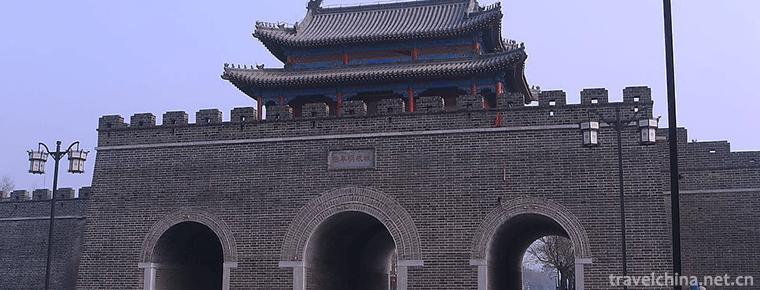
-
Qinghai Lake
In Qinghai Lake, the Tibetan language is called "the weming cloth" .
Views: 258 Time 2018-10-23 -
Huangpi Mulan Cultural Ecotourism Area
Wuhan Huangpi Mulan Cultural Eco-tourism Area is located in Huangpi District, Wuhan City, Hubei Province, including Mulan Mountain, Mulan Tianchi, Mulan Grassland.
Views: 218 Time 2018-12-12 -
Qianling Scenic Area
Qianling Scenic Area, located in Qianxian County, Xianyang, Shaanxi Province, covers an area of 1002.71 square kilometers. Population: 580,000 (2011), postcode: 713300..
Views: 136 Time 2018-12-22 -
Mingshan Scenic Area
Famous Mountain Scenic Area is located on the beautiful bank of Heilongjiang Province, across the river from the Russian Jewish Autonomous Prefecture.
Views: 218 Time 2019-02-07 -
Taishan Hot Spring City
Taishan Hot Spring City Cultural Tourism Scenic Spot is invested and constructed by Shandong Taishan Hot Spring Tourism Development Co., Ltd. with a total investment of 2.6 billion yuan.
Views: 136 Time 2019-02-13 -
Kirgizyolon
The "Yolong Song" of Kirgiz is a kind of folk etiquette song spread in the Kirgiz inhabited area living in Pamir area. As a cross-ethnic, cross-cultural and cross-regional phenomenon of folk.
Views: 292 Time 2019-05-09 -
Pig Iron Smelting and Casting Technology
Yangcheng pig iron casting technology was invented in the 6th century BC. Yangcheng pig iron smelting and casting technology in the smelting and casting process first crushed the ore, then roasted at .
Views: 291 Time 2019-06-14 -
Xinyiquan
Xinyiquan, one of the traditional Chinese boxing, is an important part of Chinese martial arts culture and Oriental mysterious culture. It is a wonderful flower in the hundred gardens of Chinese marti.
Views: 150 Time 2019-07-06 -
Southwest University of Finance and Economics
Southwest University of Finance and Economics is a national key university under the Ministry of Education's "211 Project" and "985 Project" dominant disciplines innovation platfor.
Views: 153 Time 2019-08-31 -
Ding Zhens voice is on the rise and the tiktok of Ganzi Sichuan has doubled
In November 11th CCTV news and Oriental tiktok were put on a short video of the tremble. Ding Zhen, the "sweet boy" in the video, triggered a phenomenal network event with a transmission volume of more than 5 billion times. At the same time, Ding Zhen also became the propaganda Ambassador of his hometown Litang County, driving the search volume of "Litang" to soar by 620%..
Views: 86 Time 2020-12-07 -
Yibin science and technology
In 2019, there are 34 new high-tech enterprises, 13 provincial science and technology achievements transfer and transformation demonstration enterprises, 2 provincial science popularization bases and 6 Municipal Science Popularization base.
Views: 314 Time 2020-12-18

